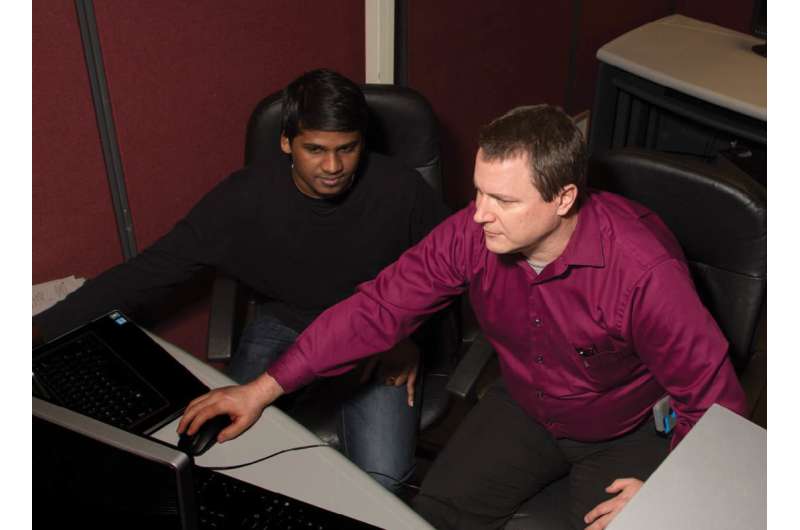Fetal heart rate research uses big data to reduce childbirth risks

Giving birth to a child can be described as a sacred, spiritual and life-changing experience. It can also be fraught with pain, fear, complications and injury to both child and mother. For Dr. Steve Corns, associate professor of engineering management and systems engineering, the key to removing some of the uncertainty associated with giving birth may lie not with woman or man, but with machine—machine learning, to be precise.
Working in collaboration with researchers from Phelps County Regional Medical Center, Corns and graduate student Vinayaka Nagendra Harikishan Gude Divya Sampath are studying fetal heart rate patterns to develop a computational model to predict the risk of dangerous conditions such as fetal hypoxia and acidosis after a mother has entered labor.
The research is funded through the Ozark Biomedical Initiative, a partnership between PCRMC and Missouri S&T that provides seed money to support biomedical research. The research team, which includes Dr. James Davison, a retired physician in obstetrics and gynecology at PCRMC, is also seeking additional financial support from the National Institutes of Health.
"The goal is to look at the heart rate to try to predict what those conditions are (that cause oxygen deprivation during birth)," Corns says. "And then before we get to the situation where the baby is highly acidotic, go in and do an intervention."
In the U.S., about 700 women die each year as a result of pregnancy or delivery complications, according the Centers for Disease Control and Prevention. Complications affect more than 50,000 women annually, the CDC reports—with the risk of pregnancy-related death among black women three to four times higher than for expectant white mothers.
Despite advances in medical technology, those numbers have increased in recent decades, the CDC notes, from slightly more than 7 deaths per 100,000 live births three decades ago to a high of 17.8 deaths per 100,000 live births in both 2009 and 2011.
As Corns explains, doctors monitoring mothers in the early stages of labor typically rely on cardiotocography, also known as an electronic fetal monitor, to record fetal heartbeat and uterine contractions, usually reviewing the results every 10 to 20 minutes.
But rather than rely on case-by-case observation, the Corns-led research team wants to analyze tens of thousands of discrete data points that could more accurately predict patterns—and pitfalls ─ to arm physicians and nurses with more informed decision-making tools than the current three-tiered classification system for fetal heart rate monitoring.
"Instead of having those 10-minute windows with a marker, we'd have a computer keep track much further back, and keep track of patterns, and use pattern recognition to not just predict categories, which are a secondhand artifact, but predict what trajectory this baby is on," he says.
The early results are promising. In a research paper presented at the 2017 IEEE International Conference on Computational Intelligence in Bioinformatics and Computational Biology, Missouri S&T researchers found that support vector machines and random forest classifiers, two types of algorithms, demonstrated a 96 percent accuracy rate in predicting outcomes in the three fetal heart rate classifications: normal, indeterminate and abnormal.
Experts advise that fetal heart rates falling into the indeterminate category should be closely monitored, with those in the abnormal category requiring further intervention.
More information: Vinayaka Nagendra et al. Evaluation of support vector machines and random forest classifiers in a real-time fetal monitoring system based on cardiotocography data, 2017 IEEE Conference on Computational Intelligence in Bioinformatics and Computational Biology (CIBCB) (2017). DOI: 10.1109/CIBCB.2017.8058546



















